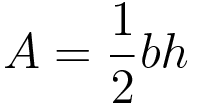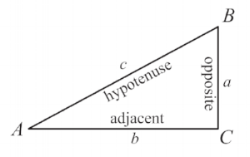21 of the Most Important Formulas to Memorize for the ACT® Math Test
Updated on June 26, 2023
The ACT® Mathematics Test covers a broad range of high school math concepts. However, the test itself does not supply much help along the way. Most notably, there is no sheet of math formulas provided. There's no way around it; a student's test-prep process must include memorizing formulas.
On the surface, this seems daunting. Fear not. While the ACT® Math Test content is comprehensive, the required formulas can be boiled down to a manageable list that any student can study and commit to memory.
When these essential formulas are then paired with an engaging and innovative test-prep curriculum, students can walk into their testing center confident in their knowledge and performance.
Geometry
The formulas for calculating area and volume of various geometric figures are some of the most vital to memorize. Without them, several of the geometry problems on the ACT® Math Test will be downright impossible. Thankfully, they are some of the easiest to remember on this list. What's more, students are likely to have already had years of practice with them—just a quick refresher should do the trick.
Of particular importance are the formulas for dealing with circular figures. Students should be prepared to use these formulas in terms of pi rather than substituting in common numerical estimates (like 3.14).
There are occasionally more obscure geometric formulas that may be required, like the formula for an ellipse, volume of a sphere, or the area of an 5+ sided figure. Thankfully, these formulas are routinely provided within the problems themselves when they are needed. That said, while they may not be worth memorizing, students should have experience working with some of these more complicated geometric formulas before test day comes.
Algebra
The majority of the algebraic formulas students need on the ACT® Math Test have to do with linear equations. Finding slope, calculating distance between two points, finding the midpoint between two points, and solving for both x- and y-intercepts are all in play.
Like with geometry, there are countless other algebraic formulas out there. Typically, any problems requiring formulas more complex than the five formulas above will be provided within the problems themselves. There are also usually multiple workarounds for a forgotten formula.
Students can feel confident in their ability to tackle ACT® algebra questions as long as they have a sound understanding of how to work through algebraic equations, and have memorized the common formulas above.
Probability & Statistics
The primary challenge with prob & stat questions on the ACT® Math Test is understanding the nature of the scenario or the analysis a question is describing. Close reading strategies paired with the formulas below will serve a student well for the handful of relevant questions on test day (and possibly on the ACT® Science Test to boot!).
That's not to say that there aren't other more obscure, but possibly useful formulas to consider. For instance, a working knowledge of factorials (5! = 5 x 4 x 3 x 2 x 1) can also come in handy for some of the more difficult probability problems that show up from time to time. But if time (or memory...or patience) is running short, attention may be better spent elsewhere instead of getting deep into the weeds of complex probability and combinatorics.
Trigonometry
On most ACT® Math Tests, trigonometry rears its head in the medium and hard difficulty portions of the test. While there aren't often that many trigonometry questions, there are enough to merit memorizing the most essential formulas below.
Reference figure for the triangle equations below
Students should also have an understanding of how to calculate and work with sine, cosine, and tangent equations. This means understanding the differences between types of triangles (right, isosceles, and scalene) as well as basic right triangle terminology (opposite side/angle, adjacent side/angle, and hypotenuse).
These tools should allow a student to handle the vast majority of the trig content on the Math ACT®. For students ready for some time-saving shortcuts, consider having them memorize some of the more popular Pythagorean triplets as well as the basic formulas for the inverse trigonometric functions (secant, cosecant, and cotangent).
One of the benefits of the ACT® Math Test over the SAT® Math Test is that the ACT® really is a straight-forward assessment. The ACT® has fewer tricks and puzzles for students to contend with than the SAT® does. Ultimately, students need to nail down the basics, and have a working knowledge of how to apply high school math fundamentals in a variety of ways.
Memorizing the 21 formulas above and having a chance to practice using them within a comprehensive, test-aligned curriculum will give students the best chance to boost their ACT® Math score.
To see how Clear Choice Prep's ACT® curriculum and software can empower your tutors and business to promote student growth and confidence, check out a free sample of our ACT® curriculum and sign up for a free tour of our program's features.
























